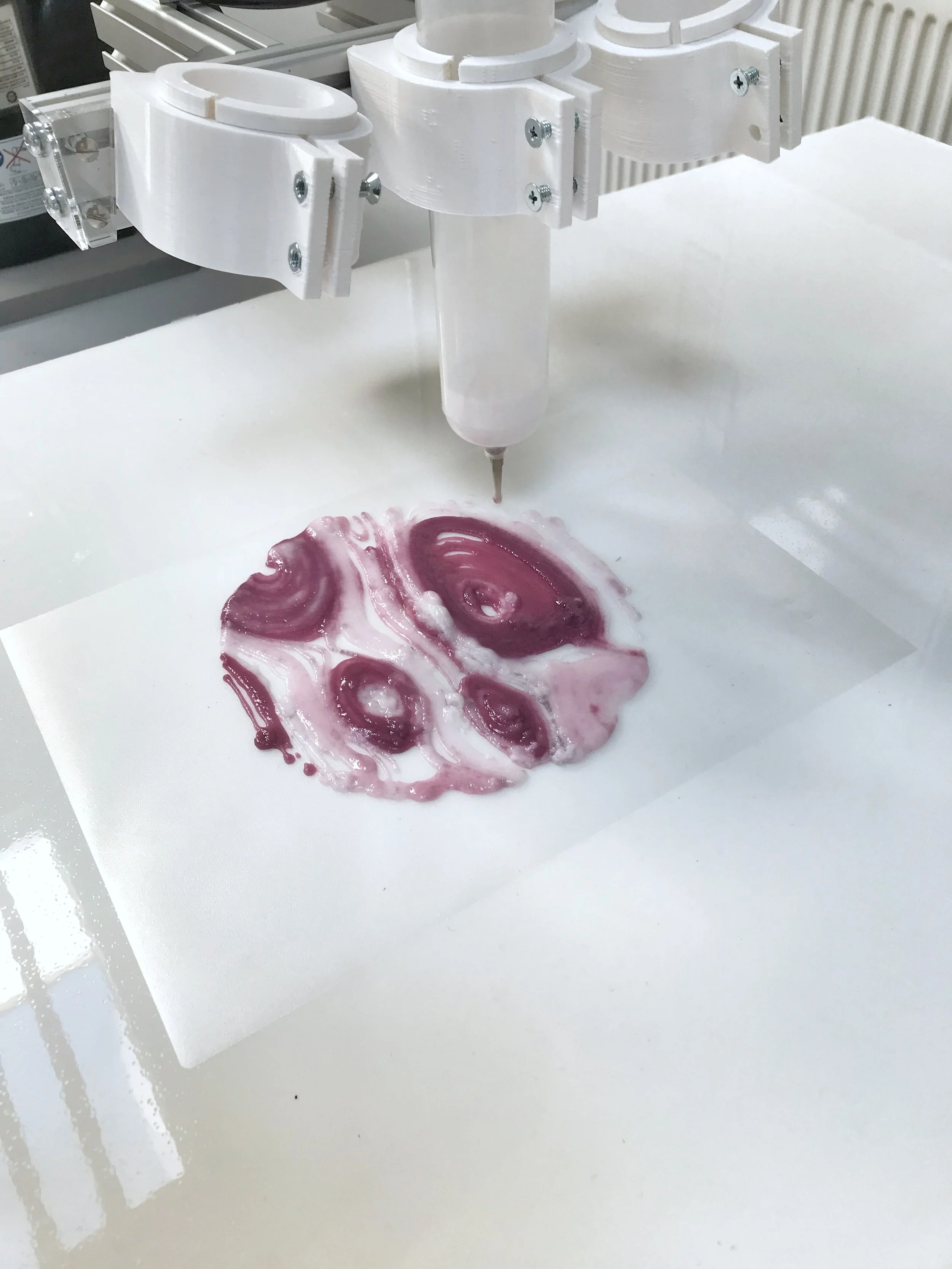about
Material tests exploring the potential to 3D print freeform nanocellulose membranes. The membranes were intended to act as light-filtering elements within an architectural context to affect the atmosphere of a space. Working with natural coloring additives, the material tests also explored the potential to achieve various aesthetic effects with the nanocellulose filament.
The material tests consisted of two experiments where the initial expiriment was dried without scaffoldings or molds to allow the material to generate it's own organic form while drying. The second experiment explored the possibility to dry the printed nanocellulose under pressure to generate a flat surface.
Nanocellulose Hydrogel
The hydrogel explored within the project was provided by Chalmers Chemistry and Chemical Engineering department, RISE Innventia and Borregaard. The filament consists of approximately 98% water and 2% nanofibres of wood cellulose which is upcycled from forestry and papermill waste.
Due to the material composition consisting of water and plant-based fibers, the material is a sustainable product that is fully biodegradable when exposed to water. The hydrogel is suitable for 3D-printing due to it's thixotropic qualities, meaning that the material is viscious enough to be extruded from a container with air-pressure yet firm enough to maintain it’s structure after being printed.
Print #1
The hydrogel started to deform throughout the drying period as the water evaporated. The general area of the material decreased while the corners of the printed element started to bend upwards to adjust to the shrinkage. The pink color also started to spread to the previously white areas, while the black pigment in the darker areas of the print became more prominent. The quality of the dried element resembled paper quality in terms of thickness and fragility.
Print #2
The printed membrane was dried under two sheets of plastic, which significantly prolonged the drying period compared to the previous print. Taking about two weeks to become fully dried, the print started to crinkle slightly while still maintaining a flat form. The general area of material also decreased with 1.5 cm at the border. The black pigment in all of the blue colors became more prominent throughout the drying period, resulting in a membrane that mostly consisted of shades of gray. The experiment however proved that it is possible to successfully affect the form of the printed outcome while the print is drying.



